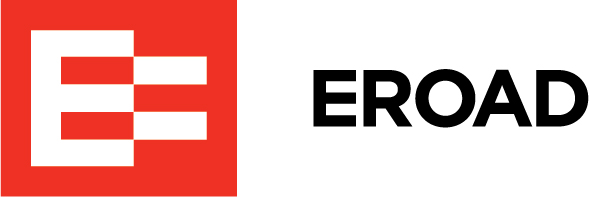Fleet Telematics Explained
The term ‘telematics’ is a combination of ‘telecommunications’ and ‘informatics.’ It is how telecommunications devices send, receive and store data related to mobile, yet connected objects. As a system, telematics describes data collection that offers practical information and guidance.
Naturally, commercial fleet management teams prefer fleet telematics systems because they improve business productivity while eliminating risks. They also save valuable time.
What is a Telematics System
A fleet telematics system enables a commercial vehicle fleet to share information to their central office, such as a dispatching office. Usually a fleet telematics system is comprised of a stationary fleet communication system and a mobile vehicle system. From municipal governments and forestry trucking to general fleets, telematics is collecting valuable data to optimize how fleets operate across the world.

The fleet communication system may be an internet service operated by the supplier of the system or a stand-alone application maintained by the motor carrier. It typically features a database where all vehicle positions and messages are kept. Digital maps allow visualization of vehicle traces and positions. The fleet communication system transmits by satellite, cellular connections, or trunked radio transmission.
Fleet managers and the telematics industry
Fleet managers strive to lower costs and ensure a reliable and safe trucking fleet. This means that fleet managers must be knowledgeable on the operations, financial and technical aspects of automotive technology as part of the fleet telematics industry.
How fleet telematics works
Behind the fleet telematics system are physical devices and software that interact to show how well your equipment is working. A variety of communications technologies keeps both dispatch and drivers in the know simultaneously and seamlessly.
Technologies used in fleet telematics include:
In-vehicle devices
Hardware devices mounted in vehicles connect to the internet using wireless network or satellite modems, to the GPS satellite network, and to the vehicle engine (using either the J-bus connection or the OBD-II port).
Learn more about EROAD’s in-vehicle device: Ehubo.
Wireless data communication networks
As wireless data connectivity has improved, this has become the predominate method of transferring data from in-vehicle devices to the internet. Gaps in wireless coverage (rural and wilderness areas) mean that data captured must be stored on the in-vehicle device until wireless connectivity is restored (known as store-and-forward).
Satellite data communication networks
GPS
Mapping engines and data
Using mapping service providers (Google, Bing, Here, Mapquest, Apple, others), GPS data is entered and displayed graphically in web browsers and mobile applications. Additional tools like geofences, landmarks, traffic data, road speed data and more help fleet managers to derive powerful insights from location data.
Learn about the EROAD and HERE collaboration.
Vehicle engine computer module
Cloud services
Internet browsers / mobile apps
Fleet telematics allows GPS tracking to provide much more than location information. It gives fleet management insight on mileage covered and vehicle speeds through a GPS tracking device or from the vehicle’s GPS connection. After the data is sent to an online portal, it can be analyzed and processed. Reporting can also show a fleet’s fuel economy, idle times and allow managers to create geofences (geographical point of interest).
Seeing vehicle locations in real-time is also a great advantage of fleet telematics. This feature helps boost route optimization, allows fleet management to share feedback with driver scorecards and helps raise customer service standards
Recent advances in telematics
Cameras
Fleet managers strive to lower costs and ensure a reliable and safe trucking fleet. This means that fleet managers must be knowledgeable on the operations, financial and technical aspects of automotive technology as part of the fleet telematics industry.
Learn about EROAD Clarity Dashcam
Asset Tracking
Asset tracking is a companion technology to fleet telematics, and the two are increasingly used by motor carriers, private fleets, construction companies and service providers of all types. They use the location data and sensor information to better manage intricate operations involving trucks and the trailers and specialized equipment they haul. Asset trackers use hardware devices that are attached to trailers and equipment, and provide GPS and sensor data (such as power/operating hours, temperature and more if available) through wireless network or satellite connectivity, similar to the way fleet telematics works. Asset tracking hardware can be powered by batteries, wired connection (in connection with batteries) and even solar. Asset tracking hardware may be ruggedized and weather-proof.
Asset tracking helps companies locate assets in the field and in yards, offering benefits including:
- Locating remote assets and equipment
- Better coordination of dispatch involving trucks and trailers/equipment
- Efficiencies in yard checks and locating specific trailers and equipment
- Asset recovery in case of theft
- Capturing billable time for equipment at customer sites
- Learn about EROAD Asset Tracker
Who needs fleet telematics?
In only a few years, modern telematics has become standard protocol for numerous industries. Those adopting fleet telematics have done so to increase reliability, raise customer service standards, boost efficiency and improve revenue.
Construction, transport and site excavation trucking companies are just a few examples of industries using commercial fleet telematics. Others include general fleets, utility companies, taxi companies and car-sharing services, governments and municipalities, researchers and powertrain manufacturers.
Benefits of telematics
The fleet telematics industry offers motor carriers several advantages. Here are some of the most popular ones:
Improving productivity
Lowering maintenance and fuel costs
Reducing administrative costs
Notification functions
Tracking cargo
Improving driver safety
Real-time tracking of driving regulations and vehicle health keeps drivers off roadways when it’s unsafe. It makes them mindful of everyone’s safety, not just their own.
Minimize risk with EROAD Enhanced Fleet Safety.
Telematics privacy and tracking concerns
The ELD mandate includes provisions that safeguard the driver’s privacy. For example, if driving for personal conveyance, the driver’s location data is only available within a 10-mile radius. Managing driver expectations is critical to successfully implementing a fleet management system.
It’s also advantageous to provide incentives to drivers based on the driver benchmarking fleet management software can provide This might be done through bonuses given to drivers who are improving their safety metrics or being more fuel efficient.
Data sharing
While fleet telematics is very useful, protecting the data security of fleet telematics is critical. Be sure to implement security best practices in both product and software development.
First, create a committed team of managers and security specialists at your organization. Then, establish thorough and clear privacy and security policies and procedures. And fully train all company staff, end-users and partners on them regularly.
EROAD – a leader in fleet telematics
EROAD is a leader in innovative solutions in the fleet telematics industry. EROAD’s fleet management enables you to run a safer, more efficient fleet and reduce the burdens and costs associated with manual paperwork. Our superior accuracy provides your business with the best data available to help you improve productivity and customer service, reduce operating costs and maximize uptime.

